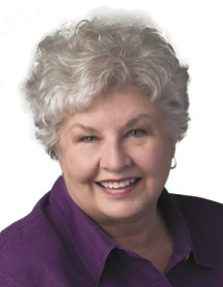
19 Aug 2014 The turning of wheels
by Vivian Lawson Hogue
There are a few of us who were raised by parents from times quite different from ours. It can make a big difference in what we hear in conversation, terms, experiences, tools, methods and even about modes of transportation.
My parents were born in 1900 and 1901. My grandmothers wore ankle-length dresses, quite a change from my great-grandmothers’ floor-length dresses. While my parents and grandparents were raised in horse and buggy days, they would soon hear the alarming sounds of an automobile that would eventually slide into familiarity.
My dad said the first automobile he saw was a T-model Ford at a picnic in 1913. He wrote in his book — By Gum, I Made It! — “A dentist drove it onto the picnic grounds and was immediately swarmed by the curious. Someone asked how fast it would go, and he said about 20 miles an hour. He tooted the horn by pressing a rubber bulb on the side of the car.”
Two years later, he heard one coming across a cotton field, speeding at least a reckless 25 miles an hour. The driver was dressed in a dust coat, goggles and elbow gauntlets. After Dad and Mother married, they had their own Ford models with standard shift transmission, left foot on the clutch, right on the brakes and accelerator. As a result, when my mother taught me to drive in a 1959 Buick, she taught me to use my left foot on the brake and my right on the accelerator, the procedure by which I drive today.
Wheeled transportation has different meanings at different ages. For me, my stroller with large wheels would be my first ride. My next wheels were roller skates, with my first pair having training, or double wheels, and the next ones having singles. They came with a key for tightening. A key somehow wielded power and ownership. I even tried roller-skating barefoot, something I never did again after I once braked with my toes against a wooden banister railing and introduced a large splinter to the underside of a toenail. While my brothers had bicycles that had to be shared, it may have been best that I stayed closer to the ground.
Sharing can be a learning experience in negotiation and cooperation. Two of my brothers who shared a bike had a spat once as youngsters. One of them put a lock on the bike so the other couldn’t ride. Then the other attached his own lock, and they found that neither could ride. The older of the two, Marvin, said, “It seems one felt the other was getting too much riding time. I don’t recall details on negotiations, who intervened or how the peace treaty was resolved, but I think Mother was Secretary of State.”
There was one lucky person I envied, and that was Mrs. Riggs. She was a lady who drove around town on a three-wheeled cycle. It had a basket in front and one in back. I couldn’t imagine anything so wonderful. As far as I ever knew, she sold greeting cards and garden seeds.
She rode by our house wearing a flowered dress, sensible shoes and a straw hat. I never really knew where she lived, but she certainly lives in my memory along with Fred Fields’ truck that held his odds-and-ends trash collection. Another man collected as well, in addition to plowing gardens. His mules and wagon could be heard blocks away as the wooden wheels with steel rims clacked along the concrete streets.
As I grew up in Old Conway, I saw wheels turning on school buses that picked up only rural students, on buses that took workers to Little Rock and back and on local inner city buses that residents seem to want again these days. Powerful wheels perhaps moved us expediently when needed, but we know now that we were slimmer and in better health when we traveled by fuel-less vehicles and shoe leather.
A native of Conway, Vivian Lawson Hogue graduated from the University of Central Arkansas with a degree in art education. A retired teacher, she worked in the Conway School District for 23 years. She is editor of the Faulkner County Historical Society’s semi-annual publication, “Faulkner Facts and Fiddlings.” She can be reached at [email protected].











